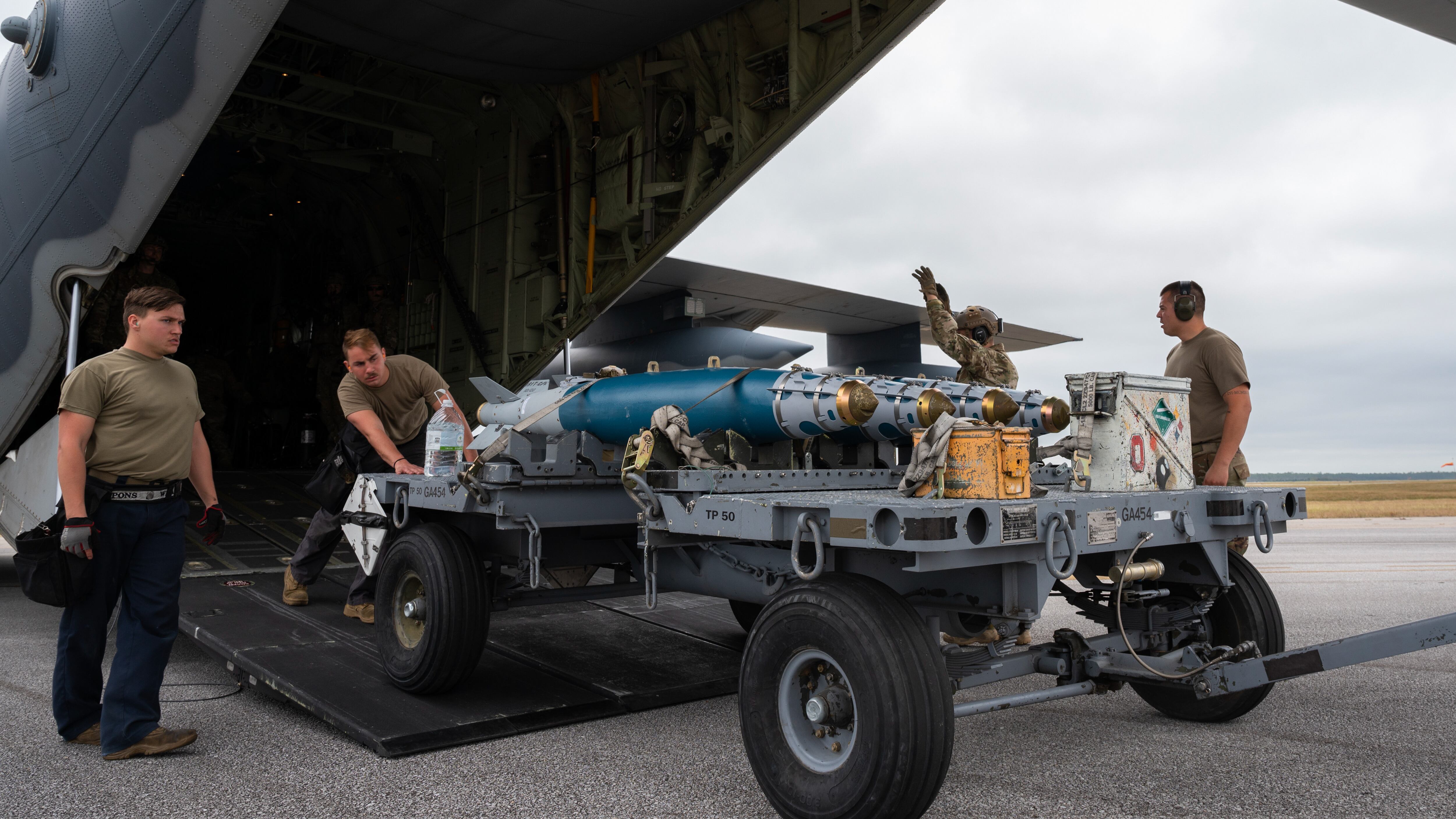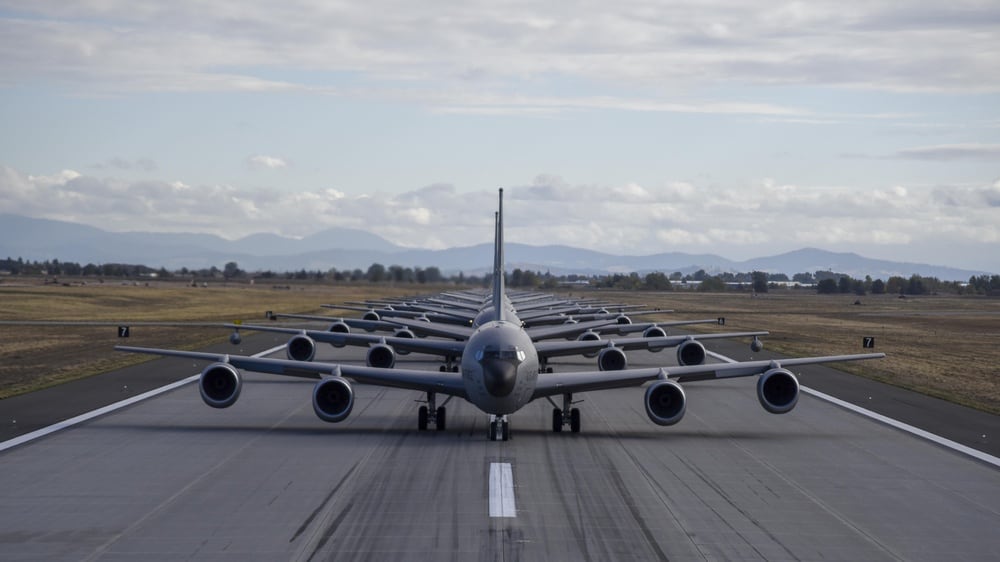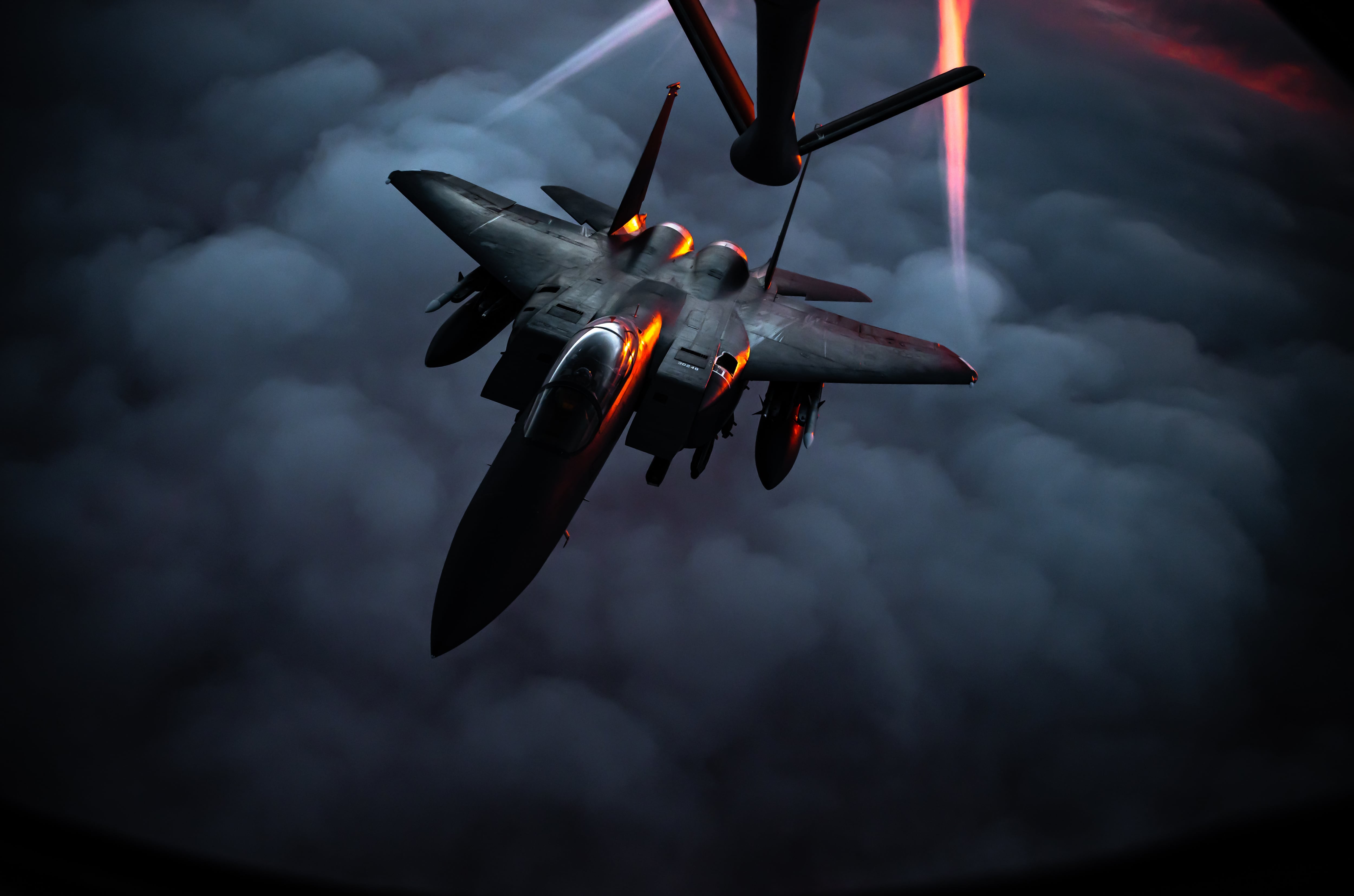The Air Force’s blueprint for deploying more responsive, better-trained teams is coming into focus this year, as 10 wings across the service, including two at one base, prepare for new roles in combat operations.
Last month’s announcement of which units will act as “lead wings” — the main group in charge of a team of aircraft from different bases and wings — sheds light on how the service views future air warfare: a guessing game without safe havens that requires far more collaboration among airmen than in the past.
By relying on these wings, the Air Force can dispatch teams that have trained together to set up camp away from a brick-and-mortar base and launch strike or surveillance operations from there. The service hopes to stay better prepared for events around the world that way, rather than deploying units piecemeal.
RELATED

Each wing has three parts to make that possible: an air base team that can build a temporary airfield from scratch; command-and-control forces to direct the flow of missions; and the airpower itself, said Col. Scott Johnson, the deputy chief of Air Combat Command’s future operations division.
Commanders in the field typically ask the Air Force to send a particular airframe for a job, such as precision airstrike, that several others could do. That approach — rather than asking for the readiest planes or those best-suited for a mission — can wear down the most-requested fleets and limit the service’s ability to respond.
Readiness has taken a hit over the past two decades as high-end fighter jets, B-1 Lancer bombers and other aircraft were instead tasked with low-tech counterinsurgency missions in Afghanistan and elsewhere. Air Force leaders have pledged to refocus their marquee planes on outrunning Russia and China.
ACC hopes its new plan will be less predictable and more capable as the airmen get used to working together, Johnson told Air Force Times.
“If it is targeted by the enemy, it can disaggregate … into smaller parts to other smaller airfields for periods of time to complicate enemy targeting,” he said of a lead wing.
Once the trouble passes, the airmen would join back up for maintenance, rest and other taskings.

The wings chosen include the 4th Fighter Wing at Seymour Johnson Air Force Base, North Carolina; 23rd Wing at Moody AFB, Georgia; 55th Wing at Offutt AFB, Nebraska; 355th Wing at Davis-Monthan AFB, Arizona; and 366th Fighter Wing at Mountain Home AFB, Idaho.
Each is based in the continental United States for easier access to resources like spare parts and training space, to be farther from regional adversaries that could attack a nearby base, and so as not to be pigeonholed into missions in one part of the world.
The organizations bring slightly different skill sets to the table. Seymour Johnson and Mountain Home fly the F-15E Strike Eagle, tailored for places like the Middle East and Europe where its lack of stealth won’t be a liability — but that could require air policing or an extra punch to take out weapons depots.
Moody and Davis-Monthan offer fleets to fight alongside ground troops, with combat search-and-rescue planes, helicopters and the A-10C Thunderbolt II. Its gun can fire nearly 4,000 rounds a minute at tanks and other ground targets.
Offutt is the headquarters for highly specialized fleets of intelligence, electronic warfare and nuclear command post aircraft. The airframes serve as the eyes and ears that can scope out a tense place like Ukraine to see whether strike and airlift assets may be needed, or an active battlefield like Afghanistan where reconnaissance and electronic attacks can support allied troops nearby.
RELATED

None of the lead wings employ the most advanced fighter jets, the F-35A Lightning II and the F-22 Raptor. That responsibility falls to five other organizations that were chosen to bolster a lead wing if needed.
They span the 1st Fighter Wing, with its F-22s, and the 633rd Air Base Wing, which offers engineers, logistics and communications staff in support of the Air Force and Army, both at Joint Base Langley-Eustis, Virginia; F-16 Fighting Falcons at Shaw AFB’s 20th Fighter Wing in South Carolina; F-22s from the 325th Fighter Wing at Tyndall AFB, Florida; and the F-35As of the 388th Fighter Wing at Hill AFB, Utah.
“You don’t need a lead wing to be a fifth-gen lead wing because the command-and-control force element and … our agile combat support airmen — [civil engineering], logistics, security forces, all those things that are part of that — don’t need to come from fifth-generation wings,” Johnson said. “If the joint force needs that capability, then we take that [F-22 or F-35 unit], we plug it into the lead wing, and then it all goes forward.”
The service also seeks a smarter way to prepare for and recover from deployment. Its new plan for spinning up forces, sending them out on missions and bringing them back for repair and training in two-year cycles — known as the “Air Force generation” model — aims to have a set of planes ready to go at all times.
The lead wings would each occupy a different six-month phase of unit training, joint training, being available for missions and undergoing maintenance afterward. Other squadrons that are on the same schedule as a lead wing can team up as commanders need, Johnson said.
RELATED

Bombers, transport planes and tankers aren’t part of the lead wing plan because they’re owned by organizations outside of Air Combat Command. ACC is keeping other commands in the loop on how the lead wing idea is progressing, but each of them independently decides how to send their forces into combat.
For example, a “Mosaic Tiger” exercise at Moody last November simulated how airlifters like those from Dyess AFB, Texas, could assist a lead wing during a deployment.
C-130J Super Hercules airlifters from Dyess’s 317th Airlift Wing ferried cargo and airdropped supplies in support of 16 A-10s in two locations, facing more dynamic situations than the airmen may be used to, the Air Force said in a Dec. 6 press release.
Airmen learned how to move cargo they don’t usually handle — simulating the need to carry supplies that would typically be stored at an established base — and depart from Dyess straight into a combat scenario.
“Given warning of a simulated adversary strike, airmen were able to rapidly get aircraft off the ground away from the threat and move cargo required to create two combat locations for the A-10s, creating a new tactical operating center for the C-130 Hercules to continue the fight,” the Air Force said.
The exercise showed the need to embed military transport experts into lead wing operations centers, and highlighted the challenges of packing up a planning cell on short notice, Capt. Daniel Bogue, a 39th Airlift Squadron pilot, said in the release.

Several other upcoming training events will let airmen practice the new style of operations and ensure it’s ready for prime time, Johnson said.
ACC plans to host an “Agile Flag” exercise this summer, along with the three-part “Mosaic Tiger” series at Moody. Offutt will participate in a command-and-control training exercise early this summer that’s still in development, Johnson said. Mountain Home is designing its own wing-level event as well.
It’ll be a while before the service begins relying on the lead wings, however. The idea isn’t yet ready to use in the real world, such as in the Pentagon’s preparation for a possible Russian invasion of Ukraine.
“We’re developing the concept for a new strategic environment,” Johnson said. “There’s no specific parts that are related to the ongoing situation.”
Rachel Cohen is the editor of Air Force Times. She joined the publication as its senior reporter in March 2021. Her work has appeared in the Washington Post, the Frederick News-Post (Md.), Air and Space Forces Magazine, Inside Defense, Inside Health Policy and elsewhere.








